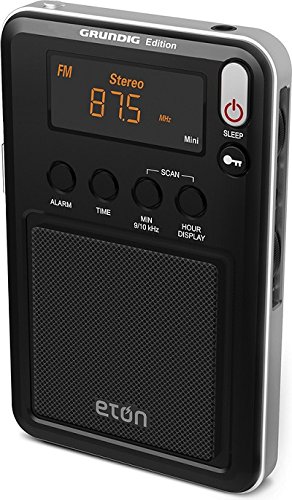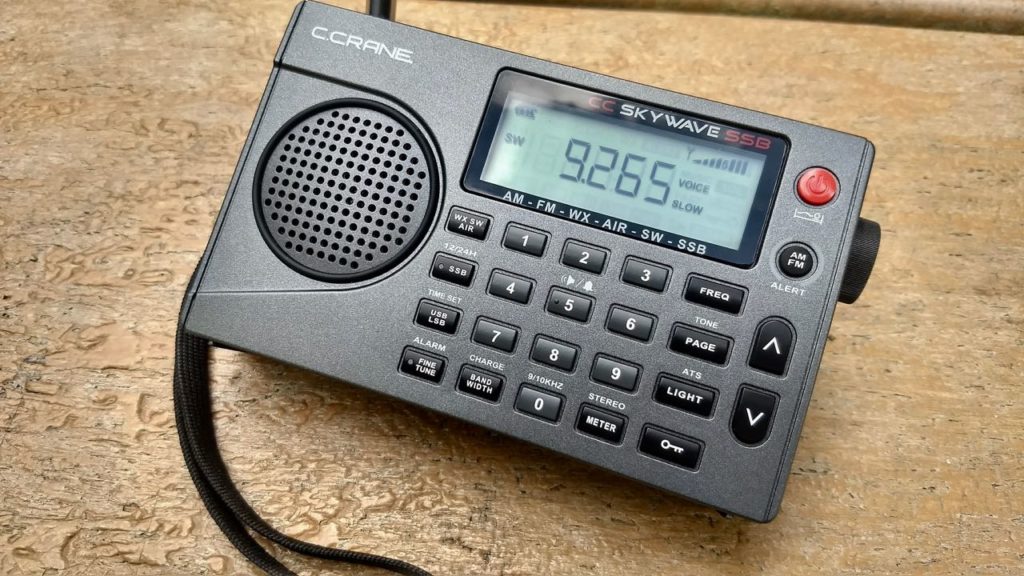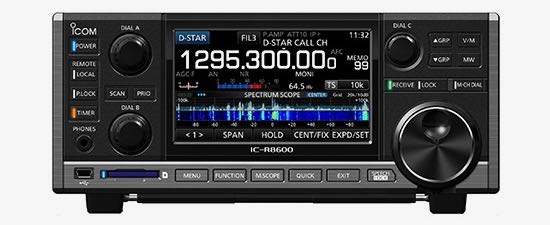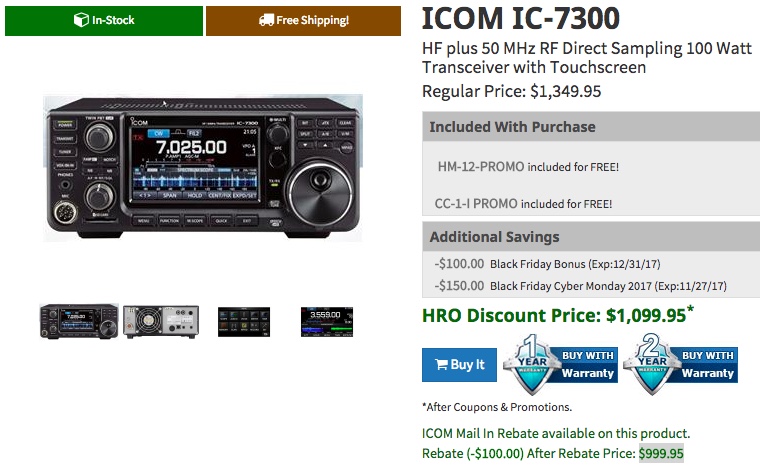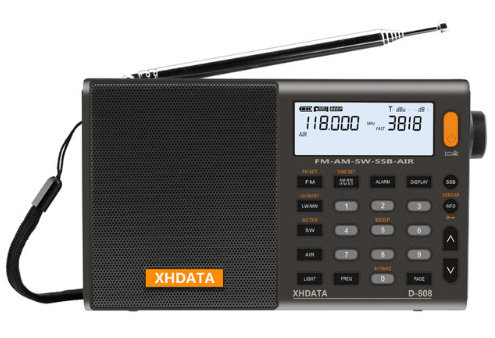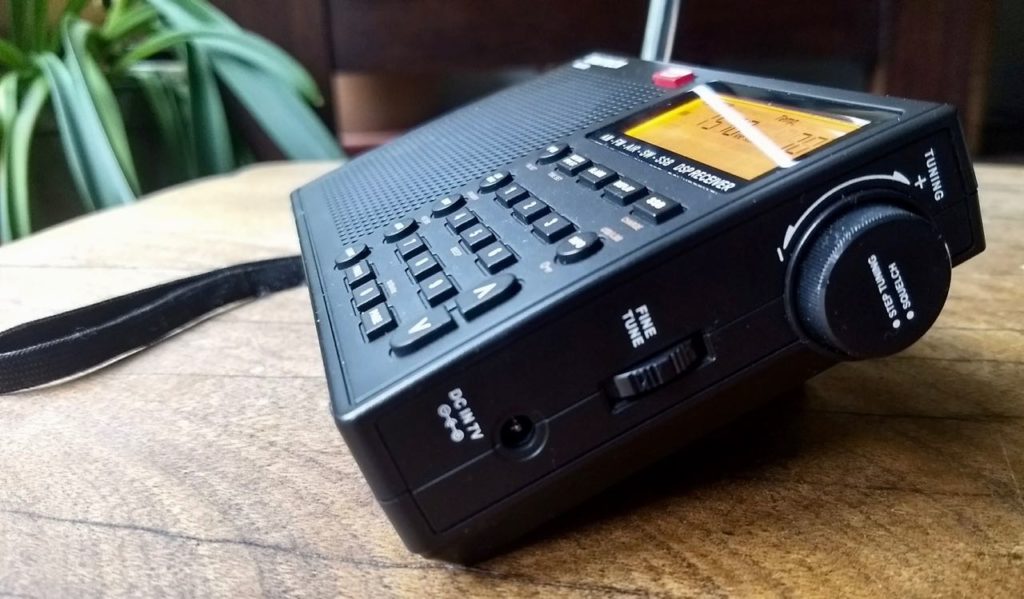Amazon.com has lowered the price on the Eton Mini shortwave receiver to $26.10 with shipping. This is about the lowest price I’ve seen for the Mini (a radio that makes a great stocking stuffer). Standard Amazon pricing disclaimer: this might not last long as they shift pricing without notice.
Monthly Archives: November 2017
Rocky is pleased with the CC Skywave SSB
Many thanks to SWLing Post contributor,Rocky Robello (KA7EII), who writes:
Just got my new C. Crane Skywave SSB radio. Same size as my wife’s C. Crane Skywave. AM, FM, WX and Airband all work just as well on the Skywave SSB as the regular Skywave.
So far, I am very satisfied with the SSB reception on the new Skywave SSB. It has one strange quirk – when you press the SSB button, it takes about 3 to 4 seconds to go into SSB mode. Five dashes appear on the display during this wait. After that, it is great.
I enjoy aeronautical communications and I get good reception of San Francisco radio and aircraft flying between the west coast and Hawaii. This is on the built in whip antenna.
Also been tuning through the ham bands and it does a nice job. There is an extra 0.5 KHz bandwidth on SSB mode so it is possible to do some casual CW listening. I like how the “Band” button works on shortwave.
When in AM mode, it cycles through the shortwave broadcasting bands. In the SSB mode, it cycles through the ham radio bands. It even selects LSB on 160-30 meters and USB on 20 through 10.
The only other receiver I have to compare it with (other than my wife’s Skywave) is my 18-year old Sangean ATS-909. The ‘909 is a bit more sensitive on MW AM broadcast band but selectivity is as good or better on the Skywave SSB.
FM sensitivity is great and the FM selectivity of the Skywave SSB beats the ‘909 hands down. Using the built in whip antennas, the Skywave SSB is more sensitive than the ‘909 on shortwave. Haven’t tried the included roll-up antenna on the Skywave SSB yet.
Having a squelch is really nice for monitoring the VHF Airband. One thing the Skywave SSB does that the regular Skywave does not do – you can scan 10 VHF Airband frequencies on the Skywave SSB.
So far, I am very satisfied with this new, tiny shortwave receiver.
Many thanks for sharing your mini review, Rocky!
I’ll also post a CC Skywave SSB review here hopefully by the end of next week–after Thanksgiving travel. My review has been delayed a as my CC Skywave SSB production units have had some QC issues: a very slight internally-generated noise in one and subpar sensitivity in the other.
My pre-production CC Skywave SSB is as Rocky describes: a gem of a compact receiver with sensitivity equal to that of its predecessor and relatively good noise characteristics.
C. Crane engineering is looking into the issues with my early production units and dispatching a replacement. I’ll post an update and review when I receive the replacement.
Icom IC-7300 “Black Friday” sale at Gigaparts
Many thanks to Dave Zantow (N9EWO) who notes that GigaParts, like HRO, is offering the Icom IC-7300 general coverage transceiver for $999.95 shipped after rebate.
As I mentioned yesterday, the IC-7300 is a fantastic general coverage transceiver with built-in sound card for digital modes, touch screen spectrum display and brilliant performance overall. Check out our review of the ‘7300 by clicking here.
This sale combined with Icom’s rebate will yield you the lowest price I’ve ever seen on the IC-7300.
Dave notes “Black Friday” deals on the Icom IC-R8600 and IC-7300
Many thanks to SWLing Post contributor, Dave Zantow (N9EWO), who notes that Ham Radio Outlet has a “Back Friday” special on both the Icom IC-7300 transceiver ($999.95 with shipping after rebate) and the IC-R8600 wideband receiver ($2,299.95 with shipping).
According to HRO, these prices will expire on November 27, 2018.
While the IC-R8600 wideband receiver will still be considered pricey by most standards, but in my opinion the IC-7300 is a steal at $999.95. The IC-7300 is a fantastic general coverage transceiver with built-in sound card for digital modes, touch screen spectrum display and brilliant performance overall. Check out our review of the ‘7300 by clicking here.
If you’ve been thinking about purchasing the IC-7300, I would bite the bullet now. This sale combined with Icom’s rebate will yield you the lowest price I’ve ever seen on the IC-7300.
Note: Dave is selling an AOR AR7030 “PLUS” and JRC NRD-545
Also, note that Dave Zantow is selling a couple of his benchmark receivers. I know Dave well and can fully endorse purchasing from him as he takes meticulous care of his equipment. Dave has listed his radios for sale on his website.
Click here to check out Dave’s items for sale.
SWLing Post readers: please contact me if you note other holiday radio deals. I would love to share them.
Dan Robinson explores the current administration’s “Big Fail” at the BBG/VOA
SWLing Post readers are likely aware that contributor, Dan Robinson, is the former White House, Congressional and foreign correspondent for the Voice of America.
Dan has just published a two part article on the Center on Public Diplomacy website exploring how the effectively the current US administration has been at restructuring and resolving inherent issues at the BBG/VOA.
I encourage you to read his full article and please direct your comments to the original post on the Center on Public Diplomacy website.
The XHDATA D-808: Ivan shares internal photos
Many thanks to SWLing Post contributor, Ivan, who shares the following internal photos of the XHDATA D-808 (which we believe may be a rebadged Digitech AR-1780):
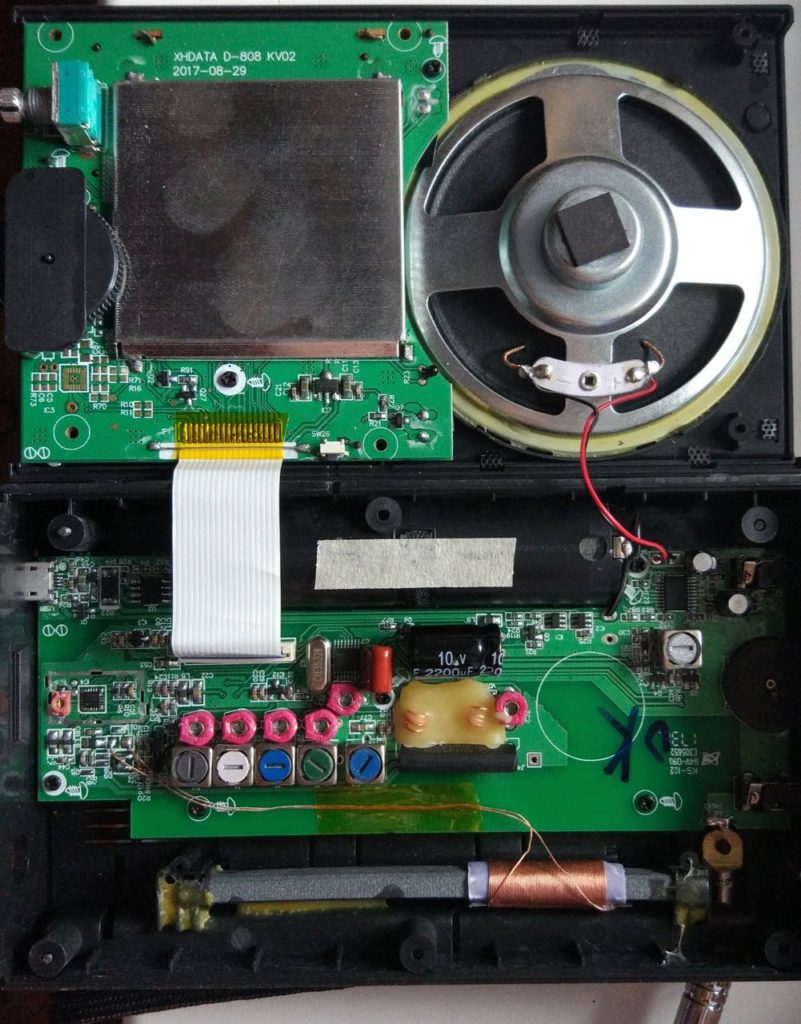
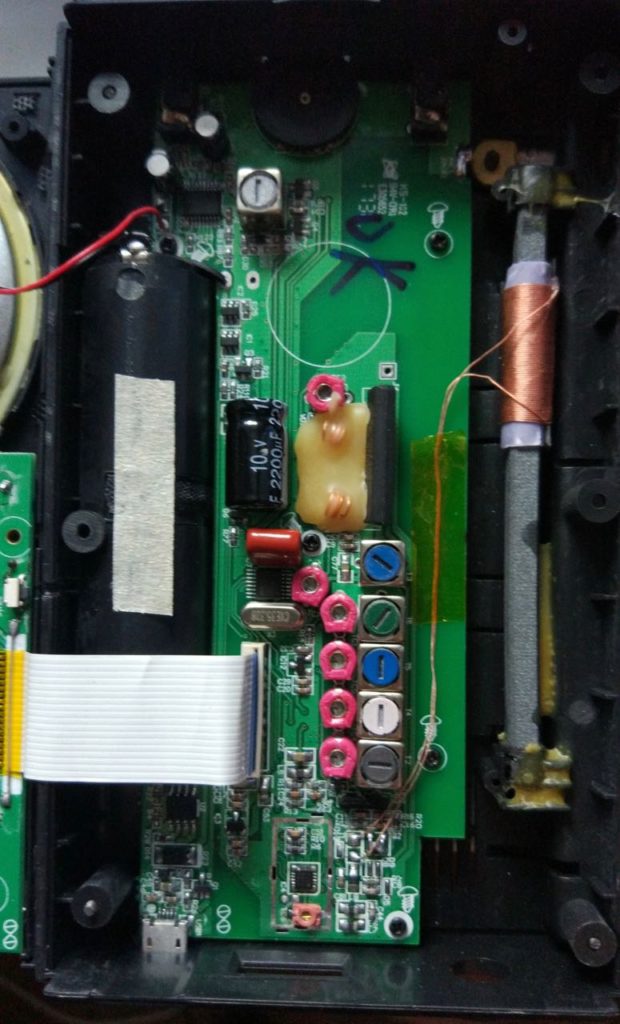
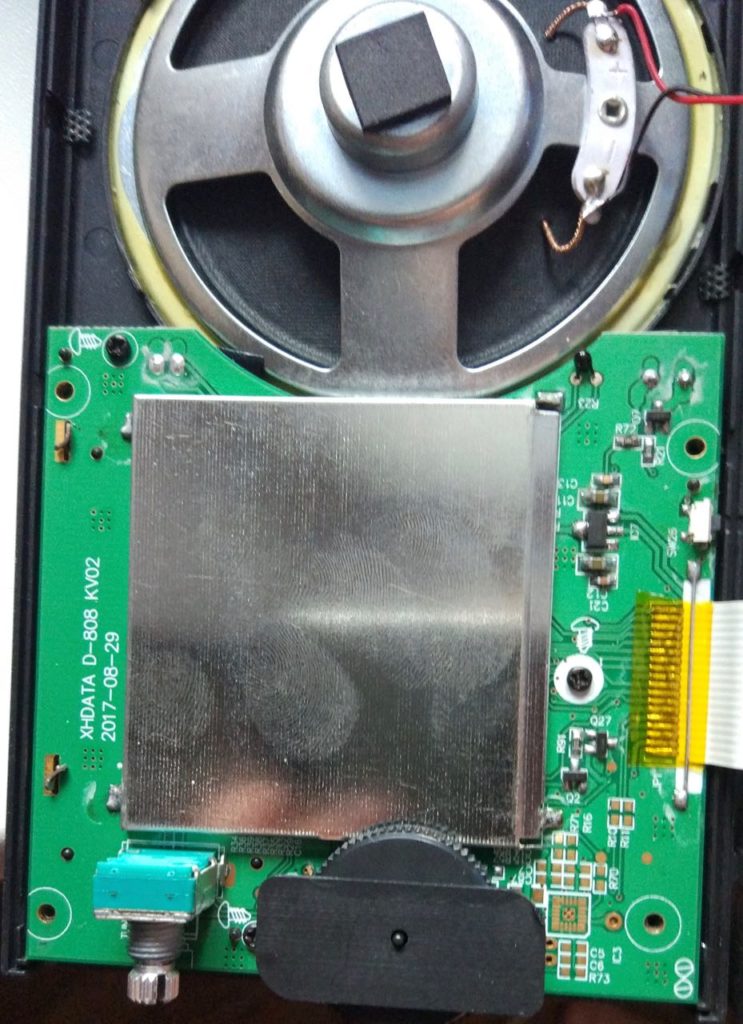 Many thanks, Ivan. Perhaps someone can compares these with that of the Digitech AR-1780.
Many thanks, Ivan. Perhaps someone can compares these with that of the Digitech AR-1780.
Dave’s Digitech AR-1780 notes
Many thanks to SWLing Post contributor, David Morton, who comments with assessment of the Digitech AR-1780:
I’ve been using [the Digitech AR-1780] in Australia (southern Tasmania) for about 5 weeks. In the last 10 or so days, I’ve got a 26m long wire hanging fairly reliably on a N-S bearing. My history is that I trained as a marine radio operator in the early 1980s, but worked in commercial IT; so no real radio theory and I only just started listening to SW again since being a volunteer in the South Pacific in the mid 1990s.
Now, to this radio. I quite like it although it has quirks I wish it didn’t have. In the 1990s, I used a Panasonic RF-B45 and it was rock solid until it died a few years ago. Every now and then, I try to fix it, but no luck…
Reception here is quite limited and that’s how I discovered the first quirk: when it scans at SW frequencies it skips. For example it seems to jump from about 9400kHz to 11000kHz. I also have an old Jaycar AR1747 and it also skips when scanning. They also skip from about 26100 and restart at 2300kHz. Whether it’s a design feature, or a fault, I don’t know. Other than that, I think it’s a great radio so far. The AR1780 lets you type in the frequencies it skips, it just won’t scan them.
Until I start to find some reliable interesting stations (I’ve picked up some Radio NZ Int and BBC World Service), I’m doing a fair bit of listening to WWVH in Hawaii. Sure listening to the time isn’t as fun, but it serves a purpose when comparing radios side by side. WWVH broadcasts on 2500, 5000, 10000, 15000, 20000 and 25000 kHZ I think. I can usually get 15000 subject to propagation at any time.
Until I gave it away, I also had a Jaycar AR1733 and it also skipped; they all probably share a common chip and skip the same frequencies although I haven’t checked closely. This radio looks identical to the Skywave many of you mention. The old AR1747 also had a Crane equivalent, and this was helpful as Crane’s manual was much better!
On the first tests with my long wire antenna, the AR1733 had a fairly clear signal, beat the old AR1747 and the AR1780 was the best. The AR1747 is hard on its D batteries, so may have been handicapped. As it got dark, I found the signal didn’t change much on 15000 kHz with any radio, but only the AR1780 would find 5000 kHz while scanning (since it skips over 10000 kHZ). The AR1747 does not have a keypad, so all tuning is by a dial or the scan function.
Oh yes, a hint I’ve learned for Golan. I gained the habit of punching then the desired frequency, then . The precludes the need to type in leading zeroes and trailing zeros. For example, I get WWVH by 5000 , while 15000 is 15000. This may go all the way back to the RF-B45, so I’ve had time to acquaint myself.
Next is batteries, the AR1733/Skywave needs 2xAA batteries, the AR1780 takes 4xAA as did the RF-B45. I haven’t yet run down any batteries in the AR1780 yet, but all my radios with 4 batteries have always worked better than those with only two. So the extra size is worth it, and the AR-1780 is a fair bit smaller than the old RF-B45. The AR1747 was an exception, it took 4xAA and 4xD and AA’s were almost a waste of time in it. But hey, it’s a telephone book size radio with a big speaker; so I keep it plugged in as much as I can.
Anyway, it’s almost 4PM here, we’re on DST so it’s GMT+11 hours. The bands start opening up soon so I want to get back to the radio. I’ve still got a lot of work to find the who, what and where of SW broadcasters. At least logging them is easy these days, when you tune into something, just point the mobile and it and make a movie!
Thanks for your feedback, David! I also think the AR-1780 is a gem of a little radio.

